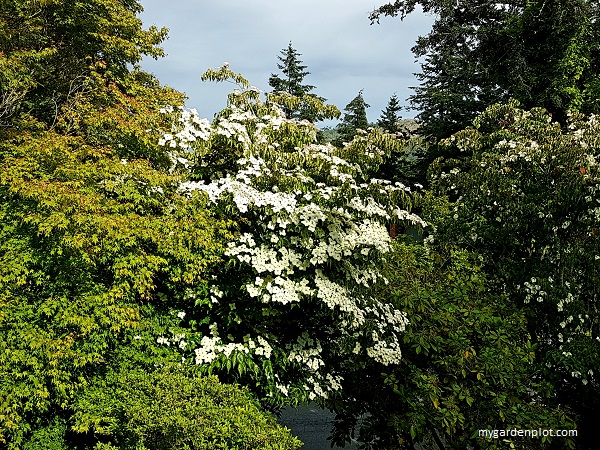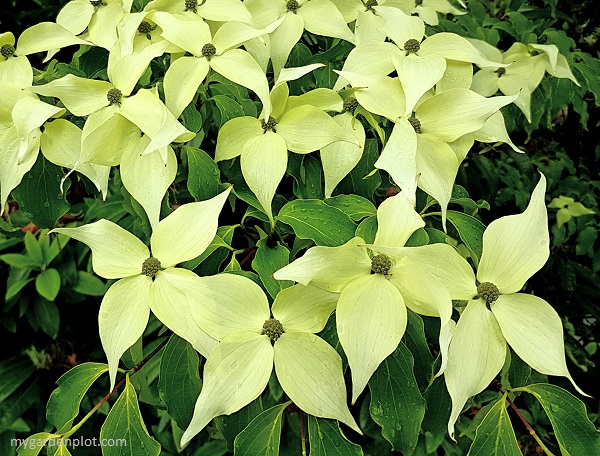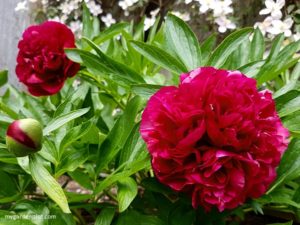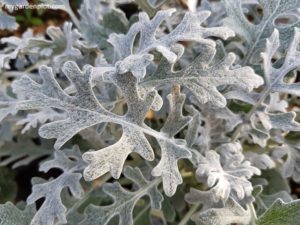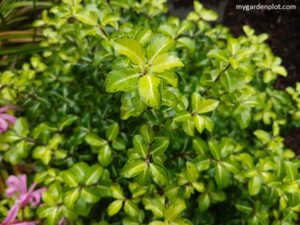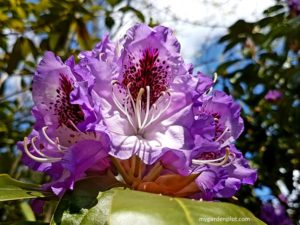About Cornus: Flowering Dogwood Trees
One of our favourite deciduous trees in our garden is the Cornus kousa dogwood. Festooned with clusters of creamy white flowers, this tree is a popular choice in many Pacific Northwest coast gardens. In spring, alongside Japanese maples and evergreen trees, they are perfect companions to rhododendrons and azaleas. Below find information how to plant dogwoods, tips on dogwood tree care including pruning guidelines and disease problems that affect some dogwoods.
Dogwoods are native to North America, as well as the Far East. They are considered either small deciduous trees or shrubs. Dogwood trees are mostly deciduous but there are a few evergreens, Cornus capitata (Evergreen Dogwood). The regional term ‘flowering dogwood’ is a misnomer, though, since all members of the genus Cornus have flowers. But the flowers are not the only attraction, their foliage, end of season berries, and the autumn colours are outstanding too. The dogwood berries are edible though not tasty to us but enjoyed by birds and squirrels. Although reasonably hardy, the dogwood can come with its problems. For this reason, where you plant it and how you care for it is crucial (more details at the end of the page).
In some municipalities or cities, dogwood trees may be protected. Please always check with your local government regarding the tree preservation bylaws for your area, as pruning or removal may require a permit.
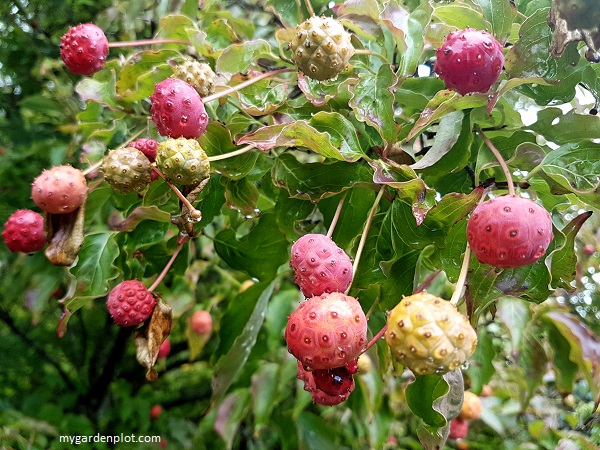
Cornus kousa: Kousa Dogwood, Korean Dogwood or Chinese Dogwood
The Cornus kousa (Korean Dogwood or just Kousa) tree is more resistant to diseases that plague other dogwoods. It thrives in zones 5-9. It is sometimes referred to as the Chinese dogwood. The attractive C. kousa is native to Japan, China, Korea and Taiwan.
The C. kousa is grown for its flowers in addition to its hardy, dependable nature. It blooms around late spring and early summer, attracting bees and butterflies. The dogwood berries are attractive too during late summer and autumn, and are very popular with birds, especially our local flickers, as well as squirrels. Thankfully the deer walk right by and leave the dogwoods alone for the most part. The attractive foliage turns a beautiful fall red in the autumn.
As a young tree, the C. kousa has a different shape with stems stretching upwards in a vase form. As the Kousa Dogwood matures, it branches out horizontally and becomes more wide-spreading. It is considered a small to a medium-sized tree reaching upwards to 6-9 metres (20-30 feet) and the same wide with full maturity.
Cornus nuttallii: Pacific Dogwood, Mountain Dogwood or Western Flowering Dogwood
In the Pacific Northwest, we have the native Cornus nuttallii (aka Pacific, Mountain or Western Flowering Dogwood) which was named after the British botanist Thomas Nuttall (1786-1859). Thomas Nuttall studied many of the native plants in N. America in the early 1800s. Here in British Columbia, the Pacific Dogwood flower was adopted as the official provincial floral emblem in 1956. Unfortunately, the Pacific Dogwood can be susceptible to dogwood anthracnose fungal disease, which was introduced to North American in the late 1970s.
Nevertheless, the C. nuttallii is spectacular, with its white bracted flowers blooming in spring. It can reach up to 12 metres (40 feet) and spreads to 7.5 metres (25 feet). It has a more circular growth habit. The C. nuttallii is not as hardy as the C. kousa. Tolerating cold hardiness in zones 7 – 9, it is typically found in the southwest corner of BC from Vancouver Island and along the west coast down south as far as California, USA.
See below for other recommended deciduous dogwoods and more about the evergreen dogwood tree.
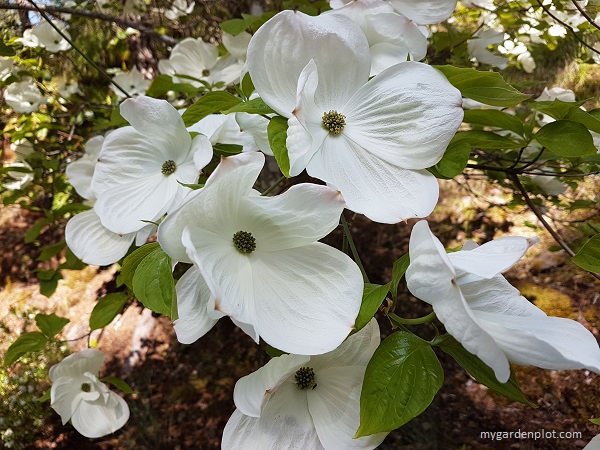
What Are Dogwood Bracts?
The actual dogwood flower, or flowers as the case may be, is the small central part. This is made up of a cluster of tiny flowers. The showy white or pink sections that we admire of the dogwood ‘flower’ are really modified leaves that appear petal-like and give the appearance of a flower. These modified petal-like leaves are called bracts. They surround the cluster of tiny flowers in the centre and together make the dogwood ‘flower’ as we see it. It is very similar in structure to the clematis ‘flower’ with its showy petal-like leaves called sepals. The photo below is of a C.kousa var. chinensis (Chinese dogwood).
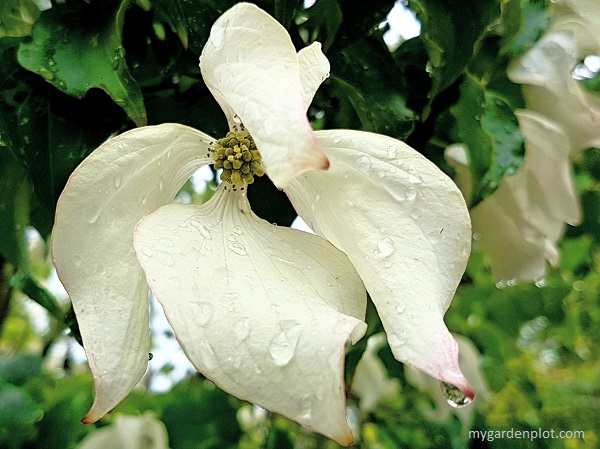
Dogwood Trees At A Glance
Type: Mostly Deciduous Trees / Few Evergreen
Location: Cool Sun / Partial Shade
Seasonal Interest: Late Spring & Early Summer Blooms / Autumn Foliage And Berries
Height: 1.5 – 12 metres (5 – 40 ft)
When To Prune: Mid to Late Winter (see more information below)
Cold Hardiness Zones: 3, 4, 5, 6, 7, 8, 9
Where And When To Plant And How To Care For Dogwood Trees
Dogwoods should be planted in autumn or early spring, and never in summer when it is hot and dry. The hole should not be deep, but it should be extra wide to allow the roots to easily grow outwards.
Dogwoods, unless otherwise stated, prefer a cool sunny site and can tolerate light shade. In a sunny location where it is protected from the hot afternoon sun works perfectly. It performs best planted in moist but well-drained, slightly acidic to neutral soil that is rich in organic matter. Add mulch in spring (but keep the mulch from touching the base of the trunk), fertilize moderately, and water regularly during hot summers.
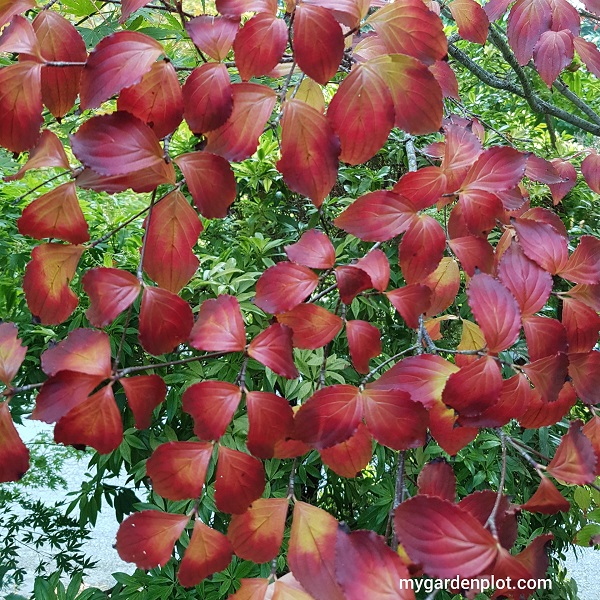
RELATED TOPIC: Buyer’s Guide On How To Choose Hand Pruners (Secateurs)
Pruning Dogwood Trees
Dogwood trees have a naturally attractive form, and most generally do not need much pruning. However, a light pruning to remove awkward branches may encourage a better shape and increase air circulation if there is overcrowding. And cut out any damaged branches annually.
Pruning is best done in winter when the tree is dormant. Schedule this winter pruning when the weather is dry – no mean feat when it sometimes seems to be raining all the time in the Pacific Northwest! Hard pruning a dogwood tree should be avoided if possible.
Tools Needed For Pruning Dogwood Trees
Below is the list of essential tools needed to prune a dogwood tree:
- Pruners – Bypass pruners are the most popular choice for gardeners and a must in a pruner’s tool kit. Bypass means the blades pass each other in a scissorlike action providing a clean cut without splintering the stem’s edge. The anvil-type pruner, where the upper blade cuts against a lower flat edge, must always be kept sharp. Otherwise, it will crush the stem while trying to cut it. The best anvil-type pruners tend to be more expensive but worth it as they stay sharper for longer periods reducing the need to sharpen more frequently. Pole pruners are also very handy to have especially when pruning trees without a ladder.
- Long-handled Loppers – These are similar to pruners but with long handles. Loppers are heavy-duty and great for harder to reach stems that may also be too thick for pruners. Shop for an extendable lopper for the extra reach.
- Pruning Saw – Saws are useful for thick stems that are growing close together. A Grecian saw or Japanese-blade pruning saw is a handsaw with a curved or straight edge that works with a pull-stroke action. Great for those stems that pruners and loppers can’t cut. It will need a protective case. We also recommend a folding hand saw with a pull-stroke action for smaller gardens. It looks similar to a large pocket knife and works in the same manner as a Grecian saw.
- Garden Gloves – Gardening gloves help keep hands clean and provide protection. Fabric gloves with vinyl offer a good grip on the fingers and palm. Good for warmer weather. For more challenging jobs, a pair of suede or leather gloves go a long way. Not too comfortable in warmer weather, though.
RELATED TOPIC: Buyer’s Guide On How To Choose A Pruning Saw
Pests, Diseases And Problems That Affect Dogwood Trees
The dogwood tree can be susceptible to various pests and diseases. Pest problems may include the usual culprits such as aphids, leafhoppers, weevils and scale insects.
The biggest issue tends to be dogwood anthracnose. Which affects mainly the C. nuttallii and the C. florida species. This is a fungal disease that begins as leaf spots. And it can extend to branches. If left unchecked, it can weaken the tree. And while it would not directly kill the tree, it does open it up to stress and other vulnerabilities. Providing the dogwood tree with good air circulation with some light pruning is an excellent preventative measure. This will counter this fungal problem as it allows foliage to better dry thoroughly after rainy weather.
RELATED TOPIC: To learn more about dogwood anthracnose and how to prevent this fungal disease see “What Is Anthracnose”
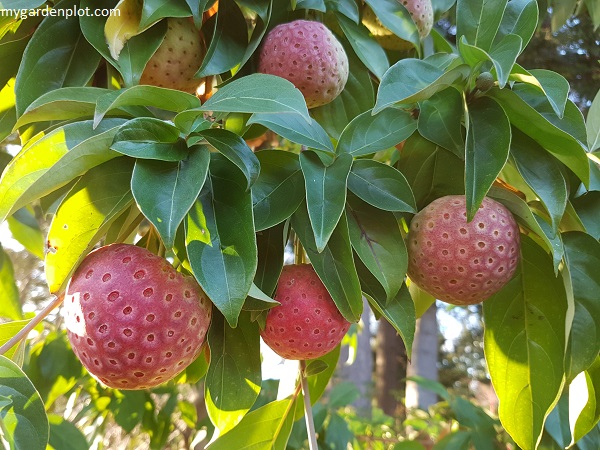
Other Recommended Cornus (Dogwood Trees)
C. alternifolia (Pagoda Dogwood): Height up to 7.5 metres (25 ft). Small white flowers in early summer. Requires shade. Zones 3-8.
C. ‘Eddie’s White Wonder’: Height up to 6 metres (20 ft). Purple flowers with white bracts bloom in spring. It is a hybrid of C. florida and C. nuttallii. Zones 3-8.
C. florida (Eastern Flowering Dogwood): Height up to 9 metres (30 ft) with an equal spread. Inconspicuous white or pink bracted flowers appear in spring. Zones 5-9.
C. mas (European Cornel, Cornelian Cherry Dogwood): Height up 7.5 metres (25 ft). Creamy-yellow flowers appear late winter or early spring. Zones 4-9.
C. capitata (Evergreen Dogwood) ‘Mountain Moon’: Height up to 12 metres (40 ft). Creamy-yellow flowers with large fruit that is just bigger than a golfball and remains on the tree well into early winter – beautiful evergreen tree in a winter garden. Zones 8 and 9. Native to China and Himalayas.
